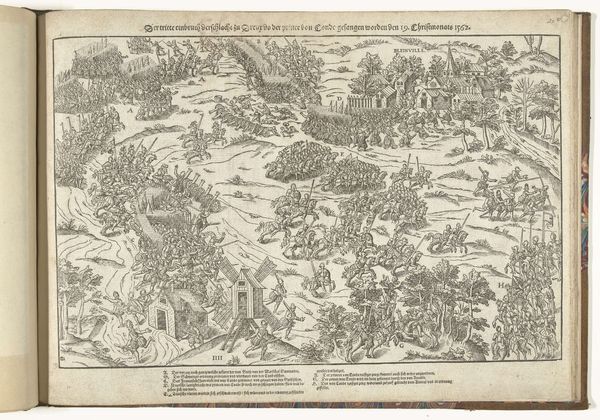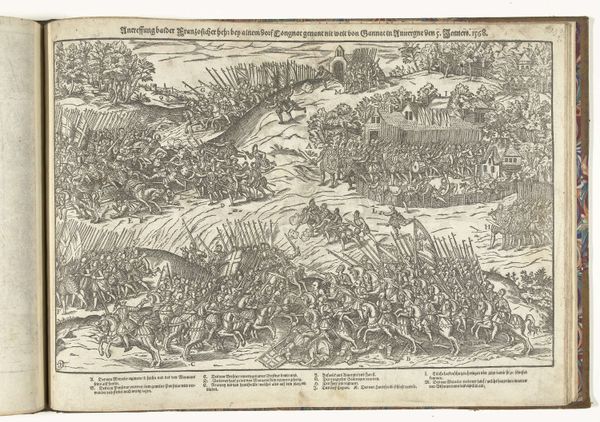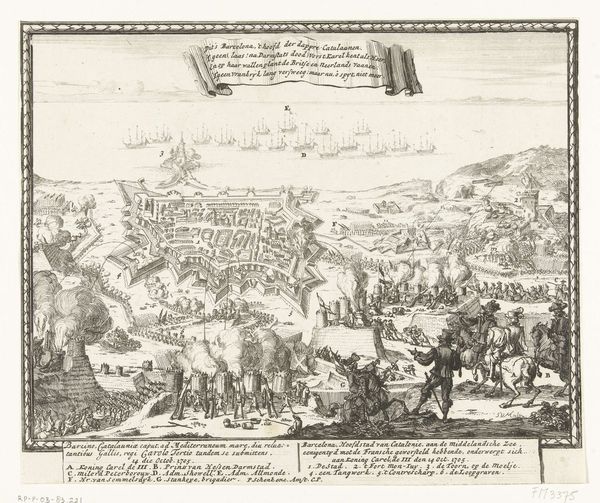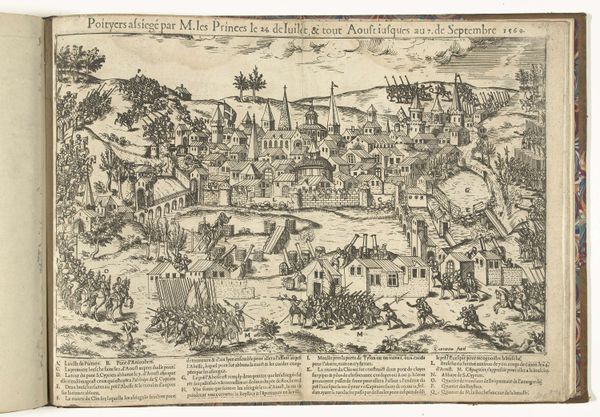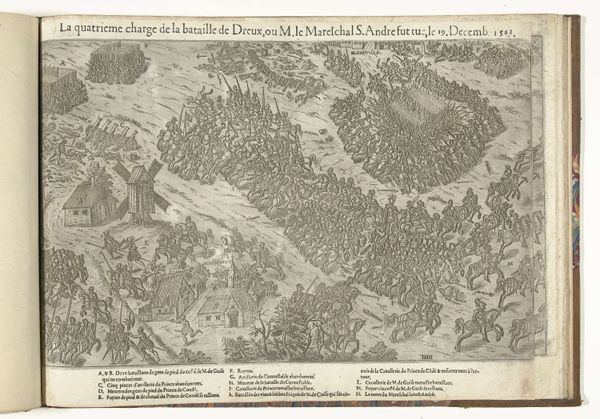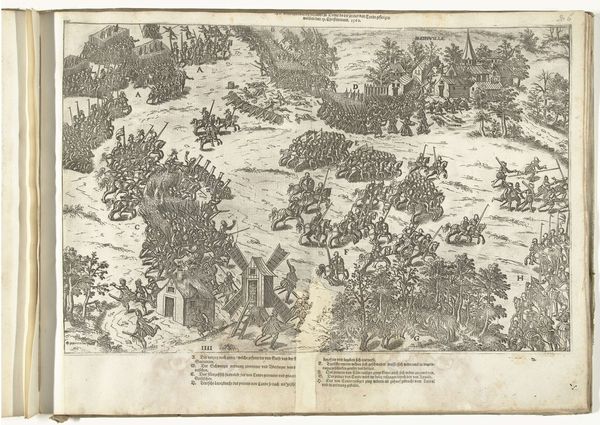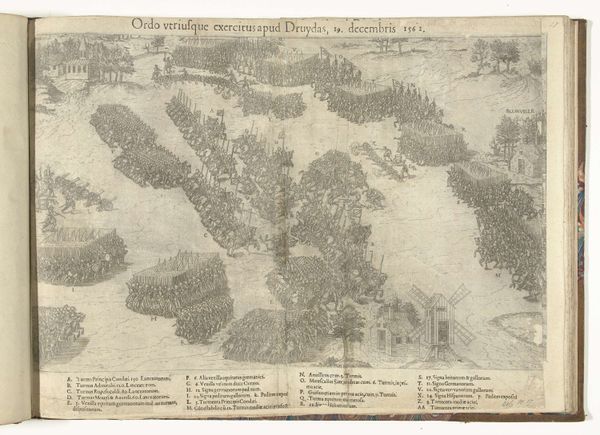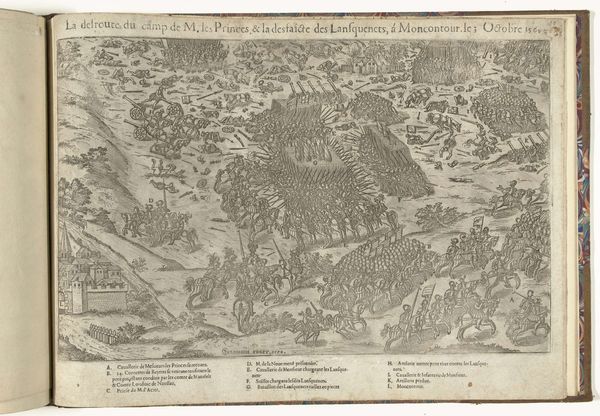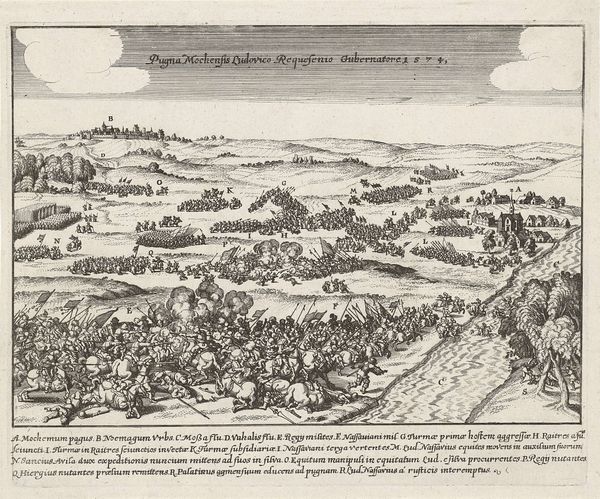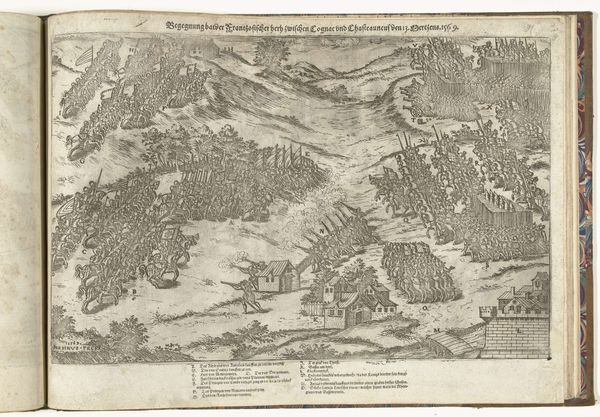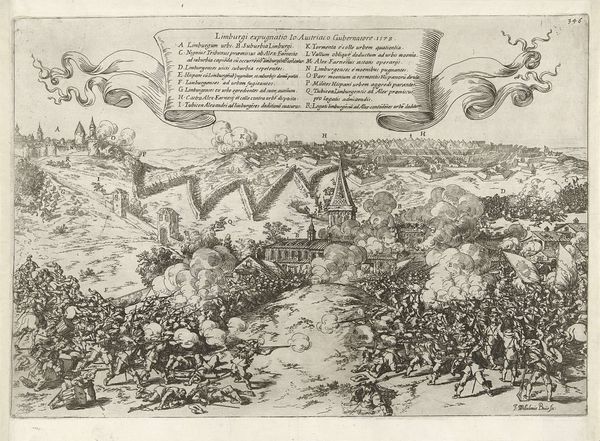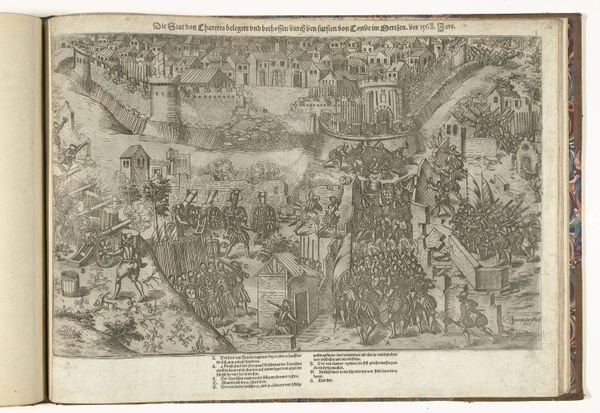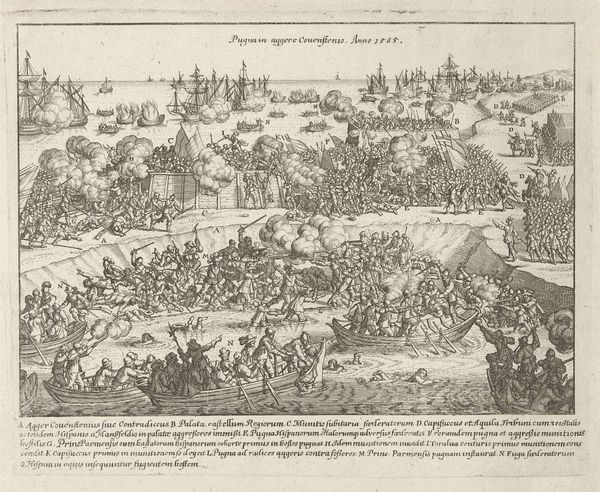
drawing, print, ink, engraving
#
drawing
#
narrative-art
# print
#
ink
#
line
#
history-painting
#
engraving
Dimensions: height 375 mm, width 490 mm
Copyright: Rijks Museum: Open Domain
Curator: My first impression is...chaos, organized chaos. A sea of tiny figures meticulously rendered, all caught in the violent dance of war. Editor: Precisely. This is "Slag bij Dreux, eerste treffen, 1562" or "Battle of Dreux, first encounter, 1562," created around 1570 by Jean Perrissin. It’s an engraving, a print rendered in ink, which accounts for the fine detail and stark line work. You really see that clear line style. Curator: 1570! That’s just eight years after the actual battle. Did he see it? Editor: Perrissin created the piece some time after, but it would’ve still been vivid in people’s minds. As a narrative piece, he wanted to capture the unfolding of events. Look at how he arranges the groups on different levels as the clash spreads across the battlefield. Curator: Yes, the bird’s-eye view. So interesting. It’s like observing a game. From up here, the terror seems muted somehow, turned into shapes, forms moving across the landscape. And yet, I feel for all those lives caught in this precise representation. Editor: It uses very clear organization with lines to separate groups, even tiny landmarks that serve as both perspective anchors and identifiers. Curator: I wonder if, back then, this map-like style made these battles more palatable to the court. If these guys sat over it strategizing like a board game. You have the lines in neat little groups ready to kill each other, organized but really showing the senseless brutality. Editor: Maybe. Or perhaps it served to bring some order to what was experienced as total, senseless chaos. In the semiotics of war, this map became another weapon to control it, at least conceptually. This piece feels like history— frozen in ink, preserved on paper. It offers both distance and insight, making the past oddly present. Curator: It’s beautiful, even. Terrible and beautiful all rolled into one densely detailed engraving. Editor: I agree entirely; and thank you for that wonderfully human glimpse, beyond just the forms and the lines.
Comments
No comments
Be the first to comment and join the conversation on the ultimate creative platform.
